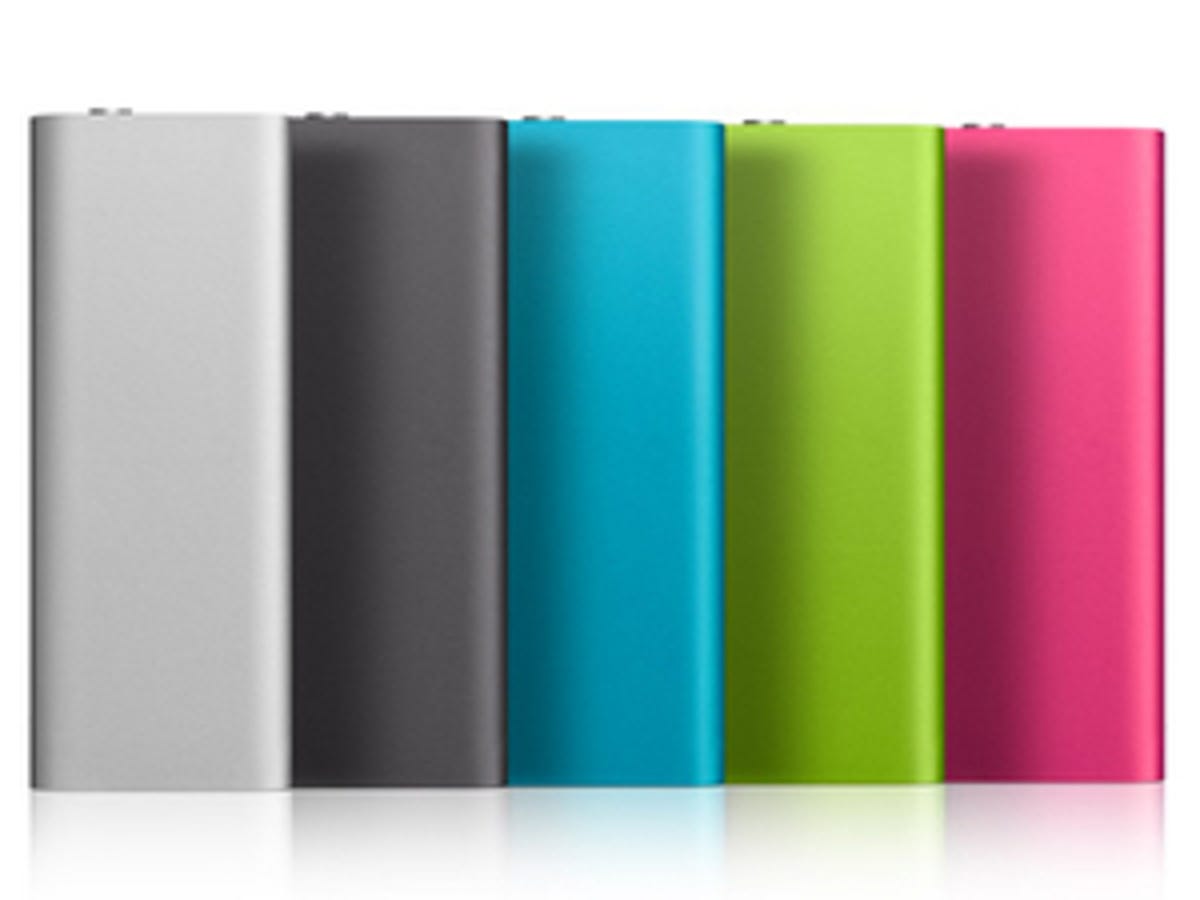 Why You Can Trust CNET
Why You Can Trust CNET Apple iPod shuffle (September '09, 3rd gen, 4GB) review: Apple iPod shuffle (September '09, 3rd gen, 4GB)
Apple's latest iPod shuffle line-up offers two storage capacities -- 2GB or 4GB -- and five colours. Apart from that, it's business as usual. But that's not necessarily a bad thing -- the shuffle's tiny dimensions are certainly pleasing, and its basic feature set will appeal to those who appreciate simplicity
It's not just Apple's iPod nano and touch that recently received a facelift -- the shuffle line-up was rejigged too. The shuffle is now available in 2GB and 4GB versions, and there are five colours to choose from, rather than the previous two. The 2GB version costs £45, while the price of the 4GB version remains unchanged, at about £60. There's also a 4GB stainless steel version that costs £75.
The Good
The Bad
The Bottom Line
Teeny tiny
Apple boasts that the third-generation shuffle is the smallest MP3 player in the world, and we're not about to argue -- it really is tiny. Imagine a stick of chewing gum folded in half and you'll get a pretty good idea of its dinky dimensions. It's also incredibly light, weighing in at just under 11g. Previously the shuffle was only available in silver and black, but now you can pick one up in silver, black, pink, blue or green.
There's only a single control on the shuffle's body -- the switch on top. This is used to turn the shuffle on and off and choose between the two play modes -- shuffle and consecutive. There's no USB port. When you need to connect the shuffle to your computer, you have to use the short, 10cm adaptor cable that plugs into the shuffle's headphone jack. As the cable is so small, it's easy to misplace. That could prove a problem, because, if you haven't got it to hand, there's no other way of getting music onto the shuffle.
Control freak
Apple hasn't yet perfected mind control, so the buttons you might expect to find on the player have had to find another home -- the headphone cable, or, more precisely, the part of the cable that runs to the right ear piece. There are three buttons mounted on a very small piece of hard plastic, providing you with controls for increasing and decreasing the volume, and a multi-function central button.

Pressing the central button once pauses playback, pressing it twice in quick succession skips forward, and pressing it three times skips back. The problem with putting the controls on the headphone cable is that it means you can't easily swap out Apple's rather lacklustre cans for a different pair. There are now headphones available from third parties with shuffle controls built-in, but these can set you back almost as much as the player itself.
Display dismay
Unlike most MP3 players on the market, the shuffle lacks a screen. Apple has tried to sell this as a feature rather than a failing, but such marketing nonsense has never washed with us. There's absolutely no doubt that the lack of a screen is still one of the biggest failings of the shuffle, making it much fiddlier to use than most rival devices.
But at least the shuffle has the VoiceOver feature. If you turn on VoiceOver in iTunes, it will create spoken-word track and playlist names that are synced alongside your tracks when the shuffle is connected to your computer. Then, when you're playing a song, you can press and hold the central button on the shuffle remote to hear the name of the track announced over the top of the music. It also means you can have more than one playlist on the player, as, when you press and hold the central button until you hear a beep, it'll announce the names of the stored playlists. To select one, you just press the button again when the playlist you want is announced.
Like all iPods, the shuffle has a non-removable battery. This gives you around 10 hours of playback time from a single charge, and it take 3 hours to charge the player fully or 2 hours to charge it 80 per cent of the way.
Although it's hard to tell from the supplied headphones, the shuffle's sound quality is actually pretty decent, offering noticeable improvements in bass response compared to previous generations of the player. But there are still no sound-enhancement options, like bass boost or even a simple EQ, so what you hear is what you get.
Conclusion
Apple's iPod shuffle remains the ginger stepchild of the iPod range. It's incredibly small and stylish, the VoiceOver feature goes some way towards making up for the lack of a screen, and its sound quality is decent, but the fact remains that, unlike the other iPod models, the shuffle falls behind the competition in terms of features, and, at times, can be quite frustrating to use. As such, we can't give it our full recommendation.
Edited by Charles Kloet
